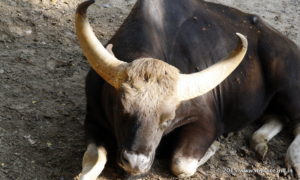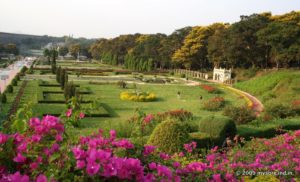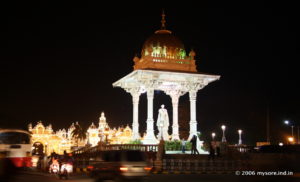
 Scan to see this page on your mobile phone
Scan to see this page on your mobile phoneOften quoted as the second most formidable forts in India, the Srirangapatna fort is located in Sriringapatna island.
Why formidable? For two reasons. The torrential Kaveri ( Cauvery) made the Srirangapatna into a difficult to cross island.That offered the natural defense to the fortification. Tippu Sultan built , rather rebuilt, the fort with many ingenuous military architectural techniques of those days.
History of Srirangapatna fort dates back to 15th century CE. The original mud fort in this location was built in 1454 AD by a local chieftain of the region Timmanna Hebbar, under the patronage of the Vijayanagara empire. Later after the fall of Vijayanagara the fort was rebuilt in 1654 AD by Kantheerava Narasaraj Wodeya, the then ruler of the Mysore kingdom. The most elaborate work on the fort – what you see today – was done by Tippu Sultan with the help of French military engineers to meet the defense requirements of the times.
This double enclosure ford is built with massive granite blocks, that is abundant in this region. The inside of the fort rampant are made of mud and rubble masonry.
The fort is about the shape of a triangle , and aligned along the northwestern corner of the island. The rugged riverbed form a natural moat on the north and west of the fort. The railway line passes right through the western and northern fortification. If you travel by train you can see the fort walls along the riverside.
On the other hand, the double moats on the south and east side were built as part of the military architecture. Though the moats are dry now, during its functional days it was filled with water diverted from Kaveri and also was crocodile infested, as means of defense. Presently these moat exists, though dry and without any crocs!
The main gateways to the Srirangapatna town are through the bridges and gateways on the south and eastern side of the fort. The highway (SH17) is along the south and eastern fringes of the fort.
Two important gateways – the Mysore Gate and the Elephant Gate – to the fort is on this side facing the highway. You’ll fine a large number of military, religious and civic structures inside Srirangapatna Fort.
The important military structures include the many armories used for storing gun powder and ammunition, the bastions where the long range cannons were mounted, Dungeons where the captured prisoners were kept.
One of the better place to see the military architecture of the fort closely is the northwestern part of the fort. The view from the ramps on the northwestern corner (near the Delhi Gate) is awesome. Walk up to the Obelisk, the war memorial, along the fort walls. You can see on the walls series of riffle shooting holes and places where large cannons stood.
The Jumma Masjid built by Tippu Sultan and the Sri Ranganathaswamy temple, after which the place is known are all located inside the fortified area. So is the Srirangapatna railway station.












